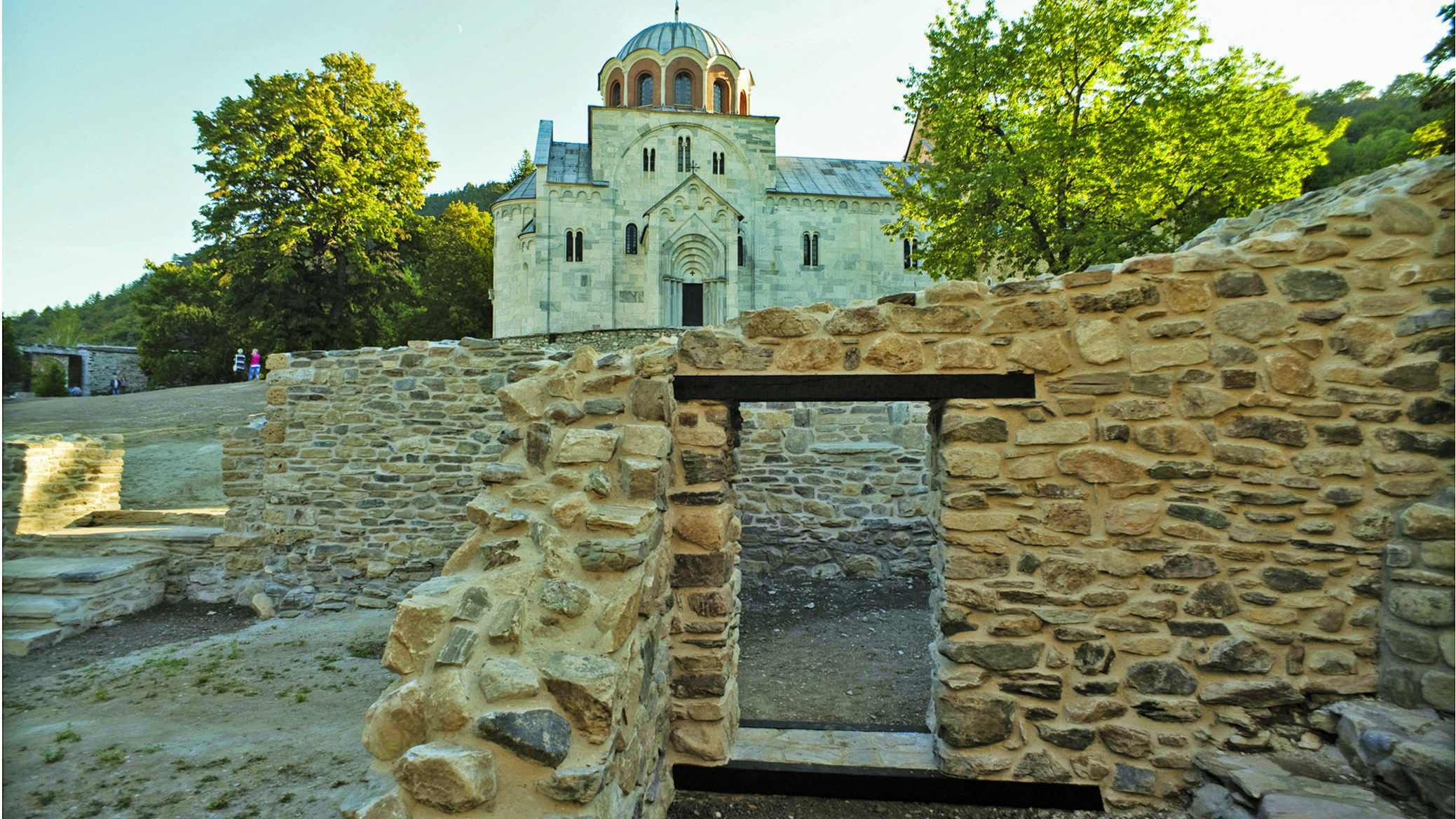STUDENICA Monastery
Studenica Monastery, the renowned Serbian medieval monastery located in the valley of the Ibar River, represents not only a spiritual but also an architectural and historical masterpiece. Founded at the end of the 12th century by Grand Župan Stefan Nemanja, this complex has become a symbol of Serbian medieval culture and spirituality, with its cultural layers recognized in a series of architectural and pictorial achievements.
Architecturally, Studenica Monastery is an example of early Raška architecture characterized by exceptional harmony and a fusion of Romanesque and Byzantine influences. The main church, dedicated to the Virgin Mary, is built in a combination of Romanesque and Byzantine styles, with monumental walls and a dome that dominates the skyline.
The combination of white marble and dark stone creates an extraordinary contrast on the facade, while the interior is adorned with a magnificent iconostasis and frescoes depicting biblical scenes, saints, and everyday life in medieval Serbia.
The monastery complex consists of residential buildings, the Radoslav’s narthex at the Virgin Mary’s church, and four churches: the Church of the Virgin Mary, the King’s Church (or the Church of Saints Joachim and Anne), the Church of St. Nicholas, and the Church of St. John, which is preserved only in its foundations.
In the Church of the Virgin Mary rest the remains of Grand Župan Stefan Nemanja, Grand Županica Ana (Anastasia) Nemanjić, the first Serbian king Stefan the First-Crowned, and King Stefan Radoslav. The monastery also possesses a rich treasury and a collection of frescoes from the 13th and 14th centuries, among which the most famous is the “Crucifixion of Christ” from 1209.
Over the centuries, Studenica Monastery has undergone various phases of renovation and restoration. It has been painted several times in various artistic periods, from the Byzantine era in the 13th century to the zoographers in the 19th century, when significant interventions were made on the frescoes under the influence of romanticism and comprehensive restoration efforts. Serious conservation efforts began in the late 20th century, with much attention paid to preserving the authentic appearance of the frescoes and architecture, and continuous work has been done since then to protect this most significant representative of Serbian medieval architecture.
Studenica Monastery was inscribed on the UNESCO World Heritage List in 1986 and has been under state protection since 1947 when it was declared a cultural monument of exceptional importance.
Our team of restorers has employed the most advanced methods to ensure the durability and preservation of the original splendor of this precious cultural heritage through a very extensive project involving major interventions. The project includes the leveling of the courtyard and the conservation and presentation of Buildings I and II in the northern part of the monastery, enhancing the visual and structural integrity of that part of the complex, conducting repairs on the roof structures of the Sava’s refectory and treasury of the monastery, ensuring their long-term stability and functionality. Conservation-restoration work has been carried out on the northern biforia of the western facade, restoration of marble cornices, and repair of electrical installations in the Church of the Virgin Mary, restoring its original splendor and ensuring the safety of the building.
Conservation-restoration work has been carried out on the wall paintings from the 13th and 14th centuries in the nave, eastern, and northern walls of the Church of the Virgin Mary, as well as on the archaeological remains in the monastery’s courtyard, allowing for a better understanding of the rich history of this monastery complex in its artistic and historical context.
Year:
2012-2015 / 2017-2019Location:
Kraljevo, SERBIALocation:
Kraljevo, SERBIAConstruction Period:
2012-2015 / 2017-2019Client:
Republic Institute for the Protection of Cultural Monuments Belgrade


